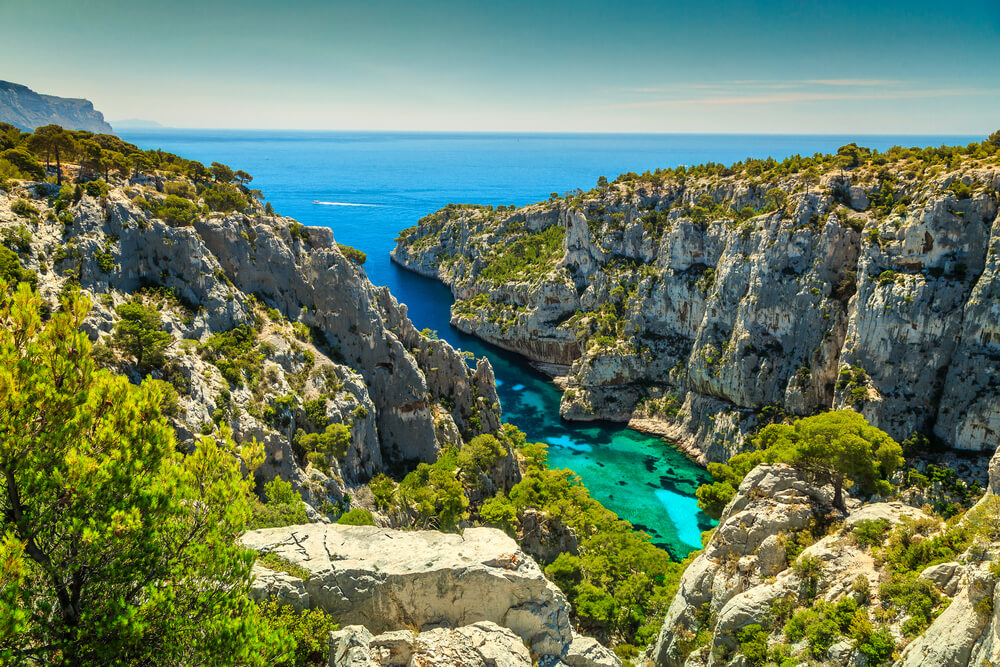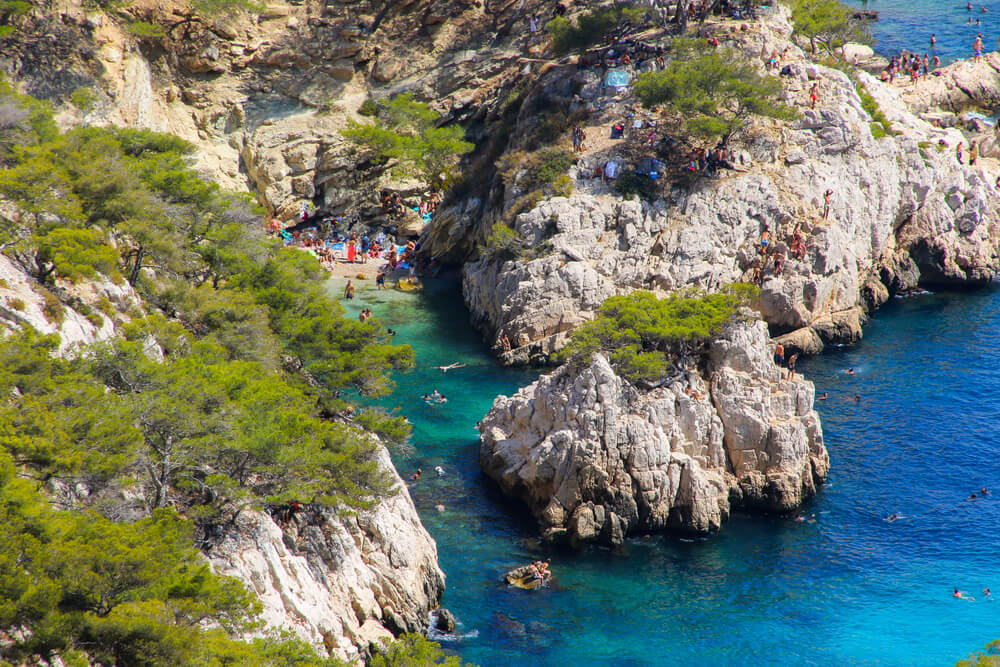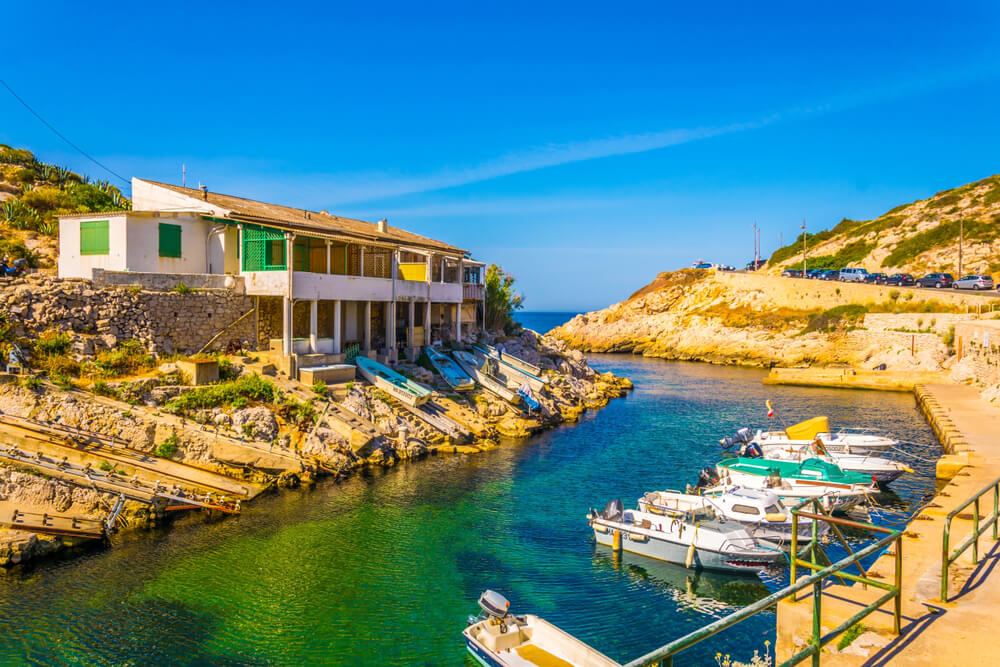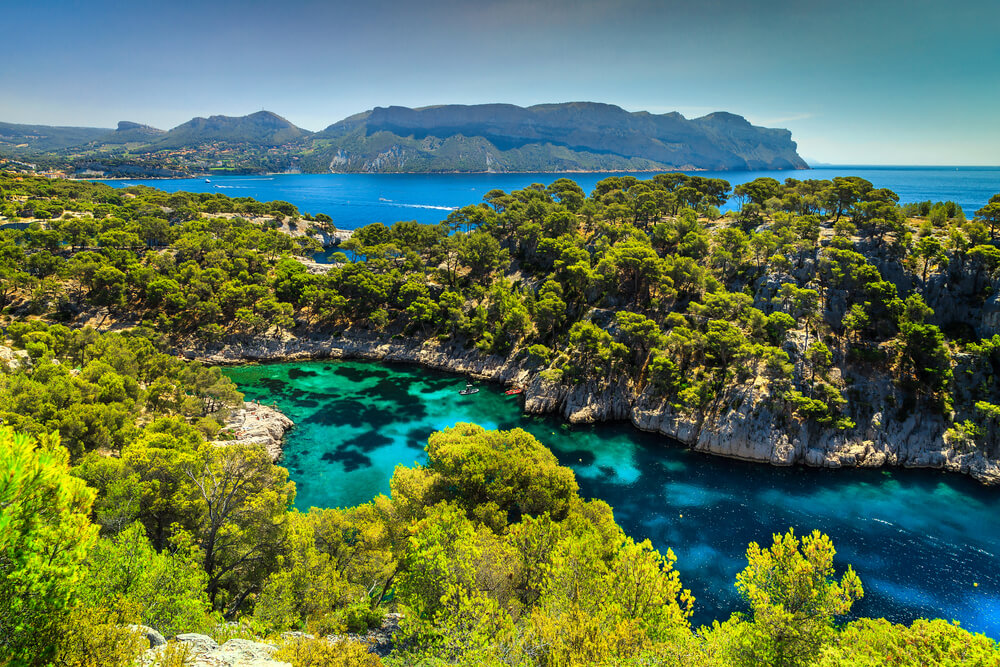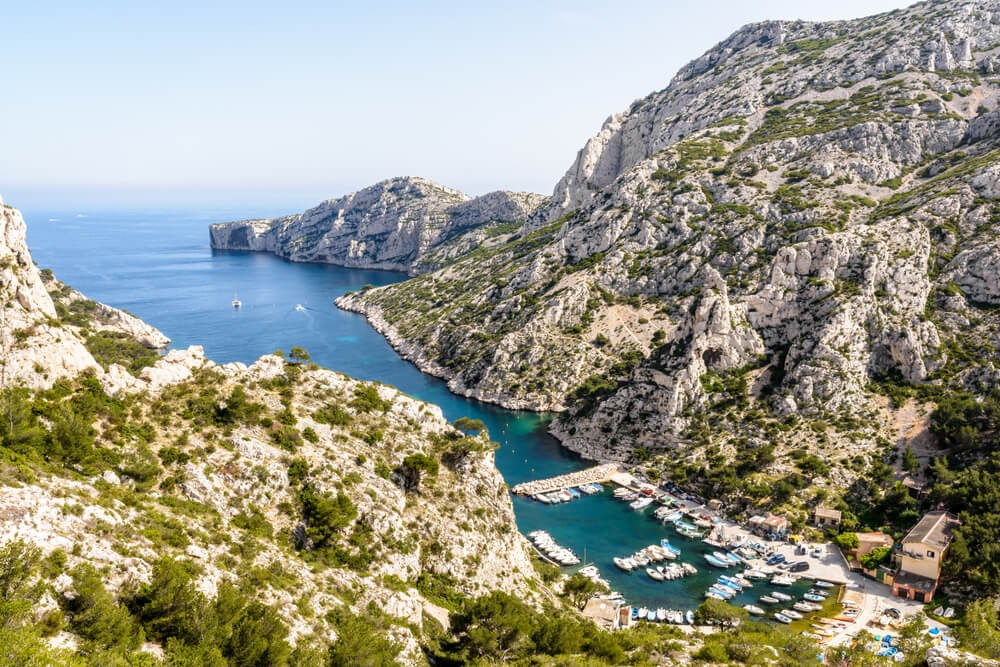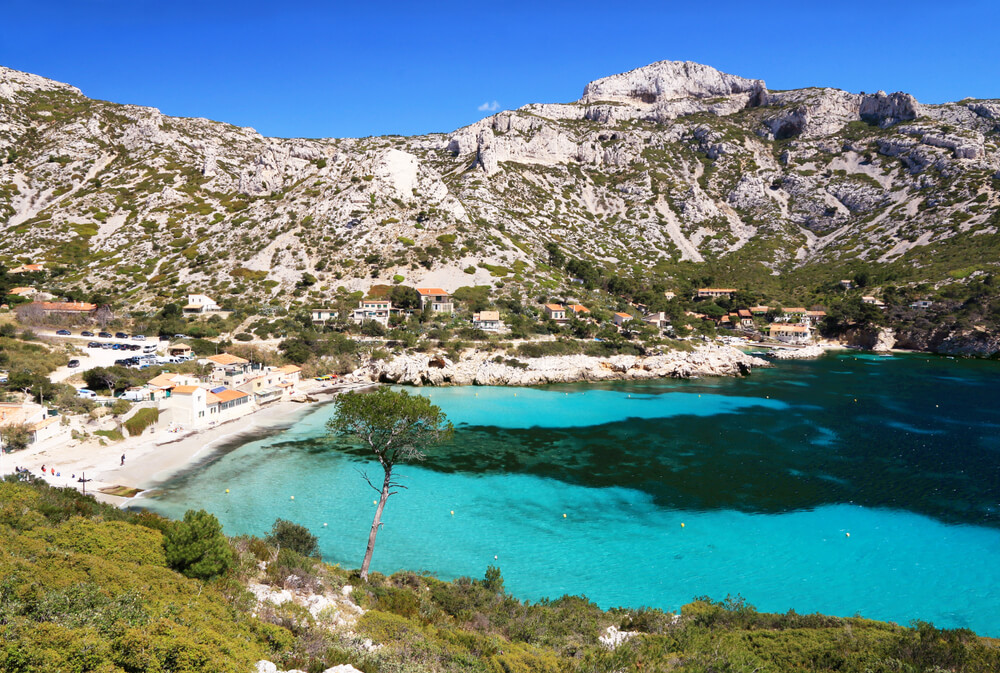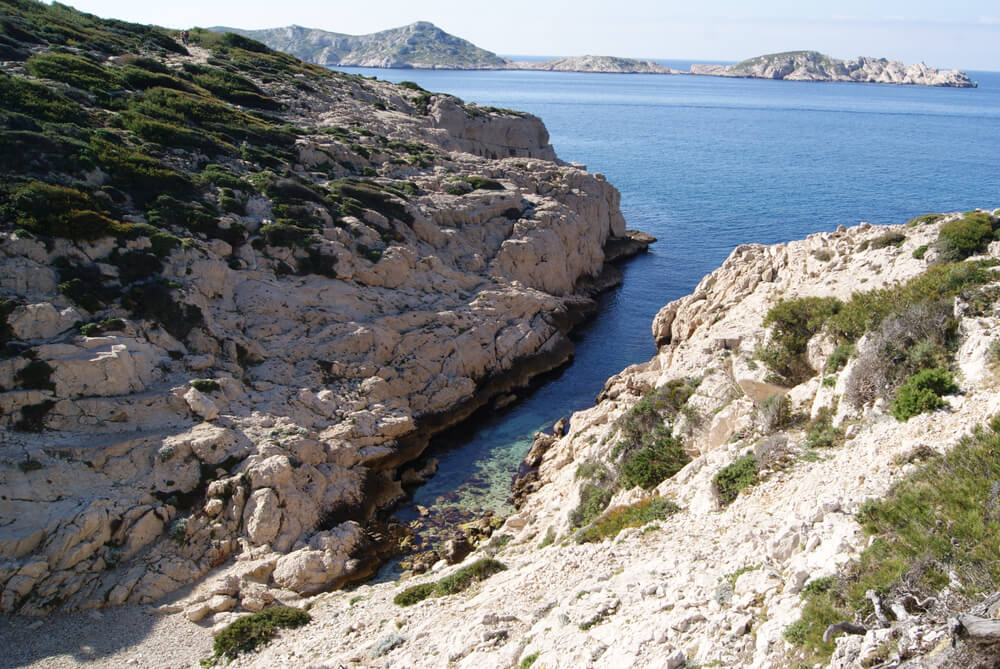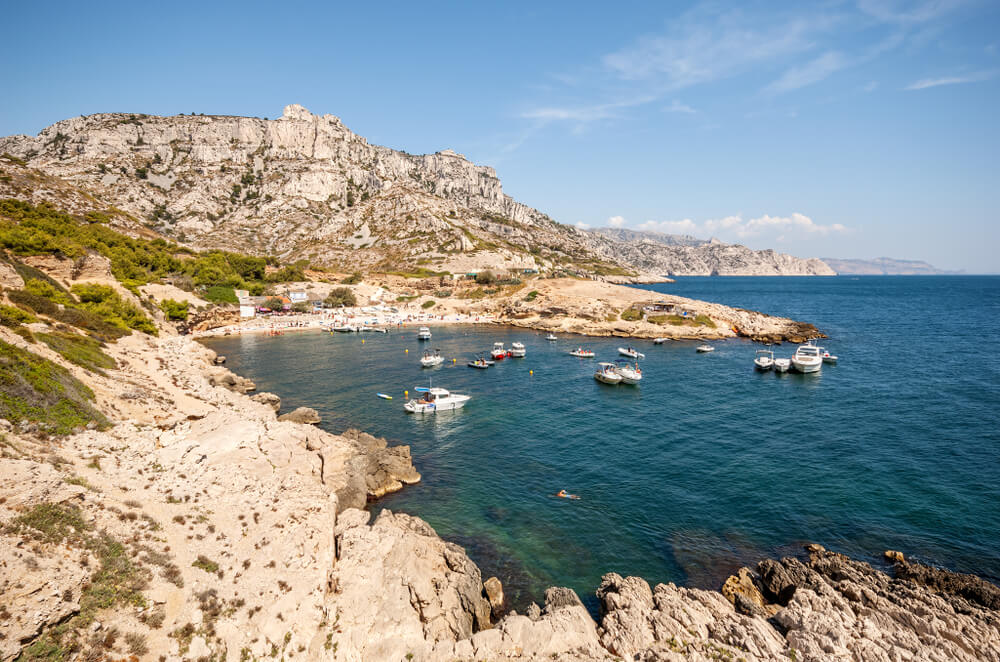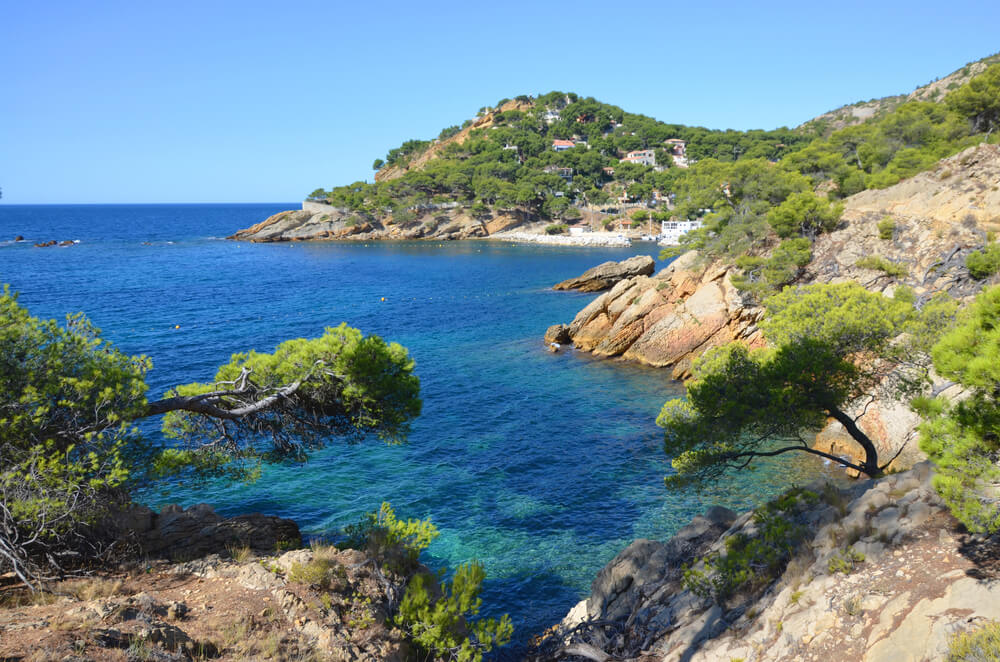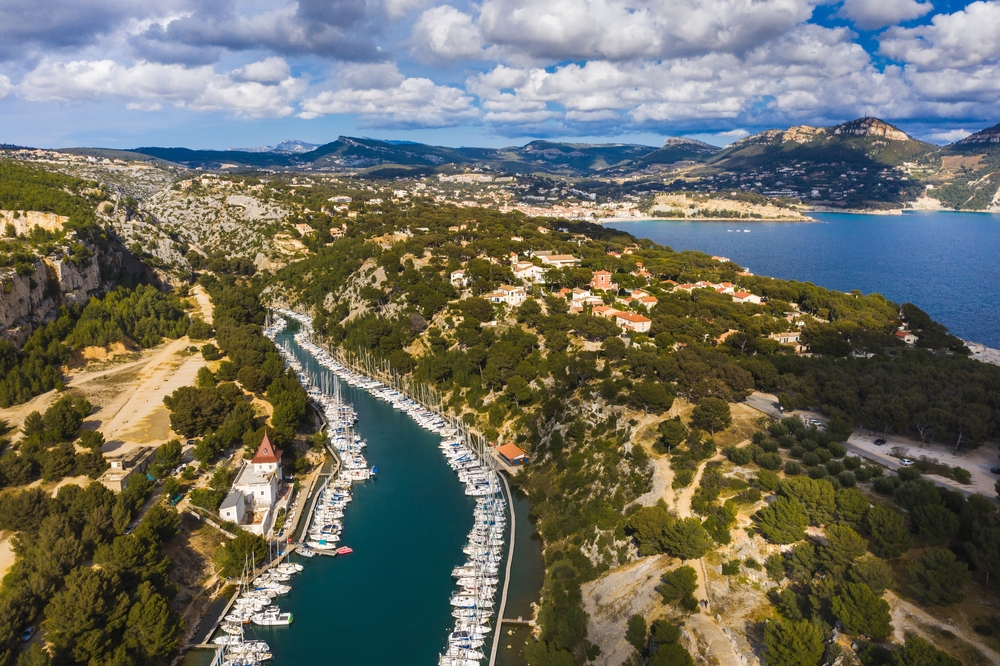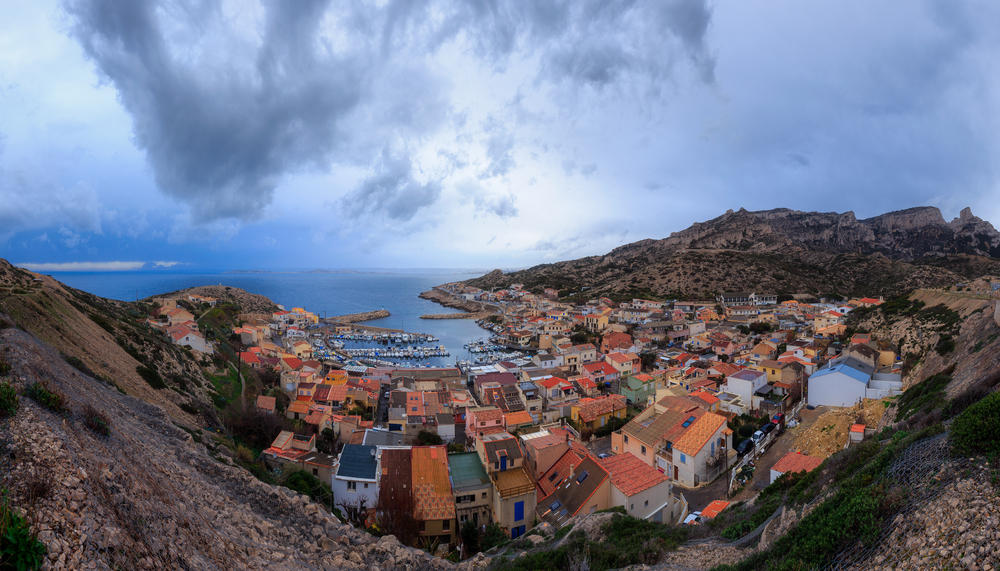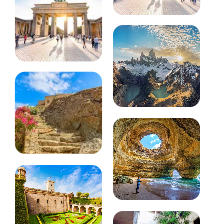What are Marseille’s most beautiful creeks?
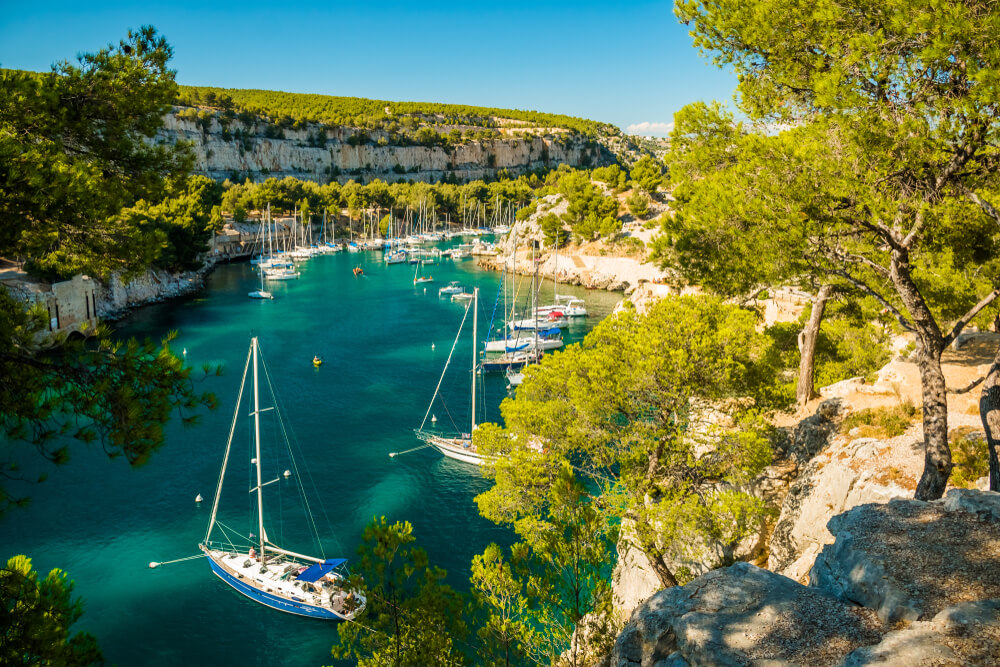
What are calanques?
A calanque is a small cove surrounded by limestone cliffs. The contrast between the turquoise waters of the Mediterranean Sea and the whiteness of the surrounding rocks makes for bucolic views and an enchanting setting for a swim.
The Calanques massif stretches for 20 km between Marseille and Cassis: 25 of these magnificent coves belong to Marseille, 1 to Cassis. Some are renowned for their exceptional aquatic flora and fauna, making them perfect for snorkelling or diving. Others are very wild and require several hours’ walking before you can reach them. The calanques of Marseille are not the only calanques to be seen in France, but they are undoubtedly the most spectacular!
Things to know before you go
Some of the calanques are, and in future will be, accessible only by reservation. This is in an attempt to combat the ever-increasing number of tourists and keep the natural park in good condition. Make sure you get all the information you need before your visit.
In summer, the calanques (certain coves or the entire national park) may be closed if there is a risk of fire. Here too, it’s important to find out before you go.
The Calanques massif is a national park: it is highly protected in order to preserve it as well as possible. So you’ll need to follow a few rules when you’re there:
- Stay on the marked paths to avoid damaging the flora – and for your own safety!
- Don’t throw your rubbish in the park: take it with you and put it in the bin when you return to town.
- Stay away from any animals you come across.
- Avoid noise pollution.
Much of the park is made up of high cliffs and rocks that can be dangerous if you are not careful. Make sure you’re well equipped – hiking boots, clothing suited to the weather and, above all, water, a cap and sun cream in summer – and find out in advance about the accessibility of the calanques: some require you to hike for more than an hour along sometimes steep paths. Don’t forget to take along a map of the area, or download the Mes Calanques app to make it easier to follow the itineraries.
If you come to the Calanques for a swim, be aware that the water here is reputed to be cooler than elsewhere! Whether it’s because of the mistral wind, the underwater relief or the underground springs, the water is always cool in the calanques… But that doesn’t stop the thousands of visitors who come here every summer from taking a dip anyway, rest assured!
For each of the calanques, hiking boots are a must!
What are the 12 most beautiful calanques in Marseille?
1- En-Vau
The En-Vau cove is certainly the most emblematic of them all! And with good reason: it’s truly magnificent. Surrounded by steep cliffs, its turquoise waters are on a par with the most beautiful beaches in paradise. Impressive, unspoilt nature makes for an incredible backdrop for a swim. A small pebble beach can be found at the end of the cove.
Accessibility :
To reach the Calanque d’En-Vau, you’ll need to walk a little:
- Either from the Gardiole or Bois Joli car parks, crossing the forest and the Gardiole pass in around 1 hour 50 minutes . This is the easiest way to reach the calanque. But make sure you get there well in advance in summer, as the car park fills up quickly.
- Or from the Port-Miou calanque: there is a pay car park (€8 a day) on the Cassis peninsula, in avenue Notre-Dame. From here, you can reach the calanque of Port-Miou, from where you can begin your walk to En-Vau. Allow around 1 hour 15 minutes for the walk. This is the most beautiful way to reach En-Vau, but you should be aware that it is also more technical than the first: you have to walk through rocks and pebbles to get there. But the views are well worth the effort!
In both cases, the paths are very busy, especially in summer! Remember to take water, a cap and sun cream with you on hot days.
Practical info:
- There is no restaurant on site, so bring your own picnic.
- There are no toilets on site.
2- Sugiton
Located closer to Cassis, the calanque of Sugiton is a breathtaking sight. In fact, it looks like two small inlets that form a setting not to be missed, whether on its pebbled beaches or from the high cliffs that surround it. Don’t forget to visit the belvedere, perched 250 metres above sea level, for a magnificent view of the calanques and the sea. This is one of the most popular calanques: to combat the overcrowding in summer, it is now necessary to book your ticket in advance to gain access at this time of year.
Accessibility :
- If you’re driving, you can park at Luminy and, from there, it’s a 45-minute walk down to the calanque. You’ll pass the lookout point and then take a path that winds down to the beach. As you climb back up, it’s a 1-hour walk to Luminy.
- Alternatively, you can take the RTM B1 or 521 bus in the evening from Marseille and stop at Luminy – PN des Calanques, then join the hike down to the beach.
Practical info :
- There is no restaurant on site, so bring your own picnic.
- There are no toilets on site.
3- Callelongue
Callelongue is undoubtedly one of the calanques to see! It’s a little different from the others, in that it has a tiny harbour and huts that give it the feel of a fishing village. It’s known as the “calanque at the end of the world”, because this is where the wildest part of the Calanques massif begins, and because it’s a dead end. It doesn’t have a beach, but it is still accessible for bathing: to do so, you have to go down into the water through the rocks.
Accessibility :
- There are a few parking spaces along the calanque, but they are quickly taken up. Alternatively, you can find parking on the road leading to Callelongue, or directly at Les Goudes, an 11-minute walk away.
- From Marseille, take RTM bus no. 19 towards Madrague de Montredon to the terminus, then bus no. 20 towards Callelongue to the terminus.
Practical info:
- There’s a bar-restaurant serving Marseille dishes.
- WC
4- Port-Pin
A neighbour of the sublime En-Vau, the cove of Port-Pin is also one of the most beautiful in the park. Although not as high as the first three, its cliffs are nonetheless populated by Aleppo pines, giving it beautiful green colours that blend harmoniously with the deep blue of the sea. A beach of sand and pebbles awaits you in this little haven of peace that marks the end of Marseille’s calanques before moving on to the commune of Cassis. From this calanque, you can access the Calanque d’En-Vau via a path with magnificent viewpoints. Be careful, though, as this is not an easy path to follow (see information on the En-Vau cove).
Accessibility :
- Park your car on the Cassis peninsula (€8 for the day), next to the Port-Miou cove, then take around 30 minutes to reach Port-Pin. Access is easy and suitable for families with children. Expect to see a lot of people during the summer, as this is one of the busiest coves in the park, so parking spaces can quickly become full.
- Alternatively, you can walk directly from Cassis town centre: it’s a 45-minute walk to the calanque, so parking won’t be a problem!
- Alternatively, you can opt for the Gorguettes car park, located at the entrance to Cassis, and take a shuttle bus to the town centre, then walk to the calanque.
Practical info:
- There is no restaurant on site, so bring your own picnic.
- There are no toilets on site.
5- Morgiou
Morgiou is a small hamlet where you can still find the houses that once belonged to the fishermen. Some forty inhabitants still live here. Its harbour, surrounded by the limestone rocks of the calanque, gives it a definite charm. Its deep waters make it an ideal spot for scuba diving enthusiasts. It’s a beautiful cove that even attracted King Louis XIII of France, who came here to fish on 7 November 1622!
Accessibility :
- If you arrive very early and outside the high season, you can try driving to the cove and parking in the few spaces nearby.
- Otherwise, you’ll have to park at Luminy and walk the 50 minutes to the calanque.
- You can also choose to park in the Parc des Baumettes, a 1-hour walk from Morgiou.
- You can get to Les Baumettes by bus by taking line 22 from Marseille, direction Les Baumettes. Stop at the terminus and it’s a 1-hour walk to the cove.
Practical info:
- There’s a bar-restaurant on the harbour serving fish and Provencal produce (please note that it does not accept payment by credit card).
- WC
6- Sormiou
This is the widest of the massif’s calanques, allowing its many visitors to settle on the long sandy beach that borders it. Its crystal-clear waters, steep cliffs and tiny harbour for residents make it one of the most beautiful spots in the Calanques Park. It’s also the only calanque with a swimming area supervised by lifeguards in summer. A heavenly setting and iron-clad security – what more could you ask for?
Accessibility :
- Sormiou has a pay car park (€4.50 a day) located behind the beach. However, be sure to check that the road leading to the calanque is open: it is often closed in high season when there is a risk of fire and to avoid overcrowding.
- If the road is closed, or if you want to take a short walk before reaching the calanque, you can leave your car at the Baumettes car park, after which it’s a 50-minute walk to the beach.
- The last option is to park at the Cayolle car park, a 1-hour walk from the calanque. Be careful, the path is quite steep, so the return journey can be difficult, especially on hot days. Remember to keep plenty of water with you. There is very little shade and the road is quite steep.
- By bus from Marseille, you can reach Les Baumettes with line 22 and La Cayolle with line 23, direction Beauvallon, La Cayolle stop.
Practical info:
- There’s a bar-restaurant on the harbour serving fish and Provencal produce.
- In summer, the road leading to the calanque remains open for restaurant customers.
- WC
7- Mounine
The Mounine cove is very narrow and shallow. It reveals a remarkable array of aquatic flora and fauna, which can be discovered by snorkelling. There is no beach here, just the rocks that line the narrow trickle of water that winds its way inland. Its very special layout will give you the impression of being isolated from the rest of the world, provided the cove is not overrun by visitors! Outside the summer season, you shouldn’t worry too much: it’s not the best-known cove in the massif.
Accessibility:
- To get to the Calanque de La Mounine, you have to leave from Callelongue. Follow the GR98-51 hiking trail for around 30 minutes and you’ll reach this little haven of peace. The path is not difficult: just watch out for the rocks, which can sometimes be slippery.
- For those who prefer a more technical hike, you can climb up to the Col du Sémaphore and then pick up the GR98-51 for the rest of the way.
- To get to La Mounine by bus from Marseille, take line 19 to the Les Goudes terminus, then line 20 to the Callelongue terminus. It’s a 30-minute walk from there.
Practical info:
- There is no restaurant on site, so bring your own picnic.
- There are no toilets on site.
8- Marseilleveyre
Located in the same area, just beyond the calanque of La Mounine, Marseilleveyre is one of the easiest beaches to get to. Yes, it has a beautiful long beach of sand and pebbles, one of the largest in the massif. Its proximity to Marseille and ease of access attract many people, but it is nonetheless one of the must-sees in the Parc des Calanques. It offers breathtaking views of the Riou archipelago and Cap Canaille. Marseilleveyre is also the name of the summit of the Calanques massif, which rises to 432 metres.
Accessibility :
- To reach Marseilleveyre, set off from the Callelongue cove and walk for 50 minutes along a signposted hiking trail: the GR58-51. It’s an easy hike, but you do need to be careful on the rocks, which can be a little slippery.
- By bus from Marseille, take line no. 19 to the Les Goudes terminus, then line no. 20 to the Callelongue terminus. It’s a 50-minute walk to the beach.
Practical info:
- There’s a bar-restaurant on site serving local produce.
- WC
9- Méjean
This cove is not on the same side as the others: it is not towards Cassis, but rather towards Carry-le-Rouet, on the Côte Bleue. It is divided into two parts: Petit Méjean and Grand Méjean. Both are well worth a visit: Petit Méjean has a harbour and beach, while Grand Méjean is a beautiful cove with turquoise waters. A great cove to visit if you’re on the other side of Marseille!
Accessibility :
- There is a small car park at the end of the cove, but there are only a few spaces. Please note that access to the calanque, and therefore to this car park, is forbidden in high season.
- Otherwise, you’ll have to park at La Redonne or Niolon coves and walk along the Côte Bleue GR. Allow around 30 minutes from La Redonne and 1 hour from Niolon.
Practical info:
- There is a restaurant on site serving fish-based cuisine.
- WC
10- Port-Miou
Head back to Cassis to visit the Port-Miou cove, the only cove not belonging to Marseille but to the commune of Cassis. Accessible on foot from the centre of Cassis, it’s ideal for families who want to explore the calanques without too many difficulties. It also has a very pretty harbour that stretches along the length of the calanque, which is more than a kilometre long in total. Its special feature, although invisible, is that it is the arrival point of a mysterious underground river that flows from the Sainte-Baume massif. It’s a cold spring, so don’t expect to feel the heat when you step into the water at Port-Miou!
Accessibility :
- To get as close to the cove as possible, you can park on the Cassis peninsula, in a pay car park (€8 a day) just 10 minutes’ walk from the cove. In summer, traffic is difficult and you may not find enough space.
- Alternatively, you can walk directly from Cassis and follow the GR58-21 for around 45 minutes to reach the cove.
- You can also park your car at the Gorguettes car park, at the entrance to Cassis, and take the shuttle bus to Port-Miou, at the entrance to the Calanques National Park. It will then take you just a few minutes to reach the calanque of Port-Miou.
Practical info:
- There are several restaurants on the Cassis peninsula, close to the Port-Miou calanque.
- WC
11- Les Goudes
More than just a calanque, Les Goudes is a real village by the sea. It comprises a fishing port and a marina, making life easier for its inhabitants. It boasts a pretty cove and an impressive view of the surrounding area, particularly Marseille in the distance. From Les Goudes, you can access Cap Croisette, which marks the entrance to the Calanques National Park. It’s a majestic setting that’s well worth the diversions, especially as it offers bars and restaurants where you can eat in a unique setting, as well as swimming, diving and fishing.
Accessibility :
- You can park in the village of Les Goudes to access the cove. There is only one road leading to the village, so leave early or visit outside the high season to make sure you can park and enjoy the area!
- The best way to get to Les Goudes is to take the bus from Marseille, first the No. 19 to Madrague de Montredon, then the No. 20 towards Callelongue. Stop at Les Goudes and enjoy the show!
- At certain times of the year, there are also water shuttles that leave from Marseille’s Vieux Port and take you to the village for €8.
12- L’Oule
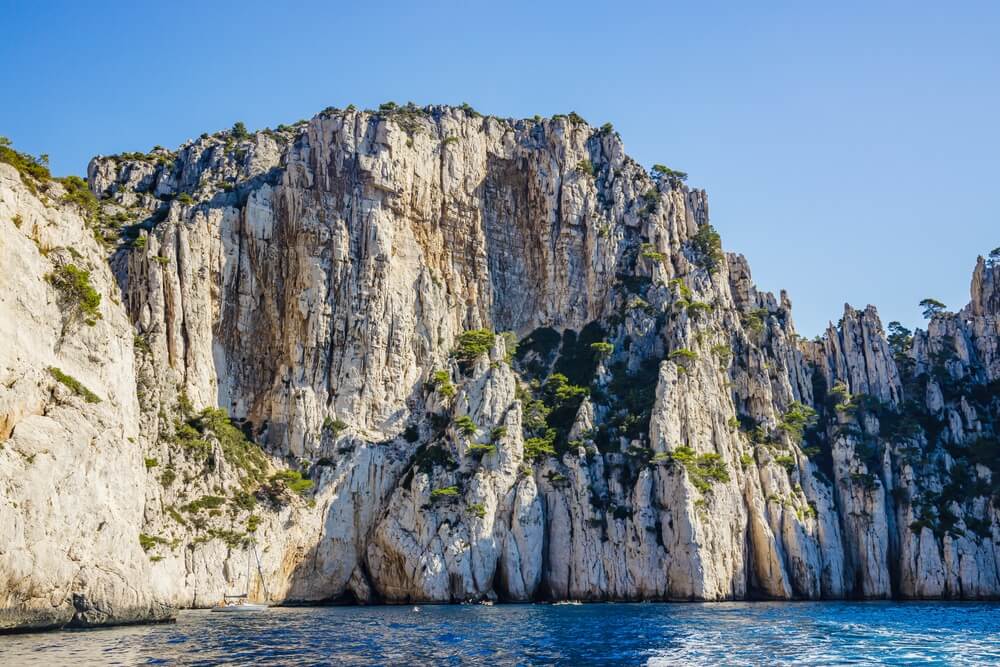
Accessibility :
- It’s impossible to get there on foot: you can, however, follow a path to reach the Grotte de l’Oule, but you won’t have a view of the calanque and you won’t be able to go any further.
- You can admire it from afar from the En-Vau lookout or the Castelviel gap.
- You can enter the calanque by boat or kayak and discover its semi-submerged sea cave.
In conclusion
Now you have all the information you need to have an unforgettable time in the calanques of Marseille and Cassis! So put on your best hiking boots, pack your sandwiches, your water bottle and your cap in summer, and set off to explore these protected areas that have so much to offer. All you’ll need to finish off the day is a little pastis in Marseille’s Old Port… A well-deserved pick-me-up!
200 audioguided tours for cities all around the world
Download